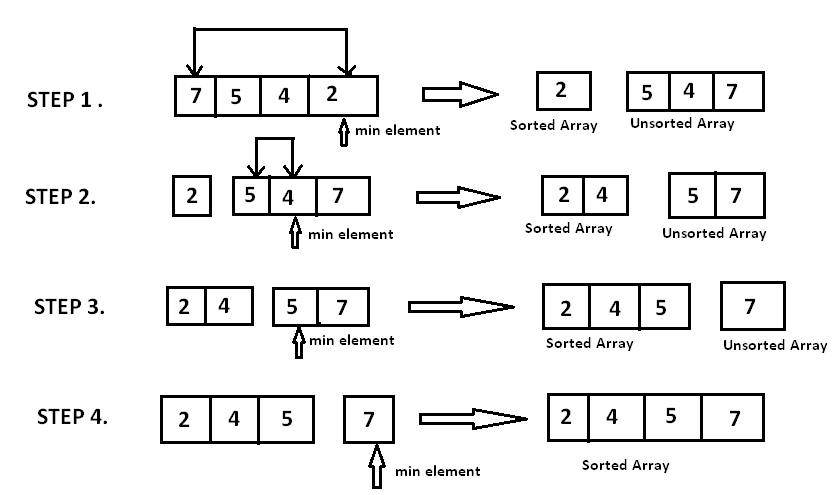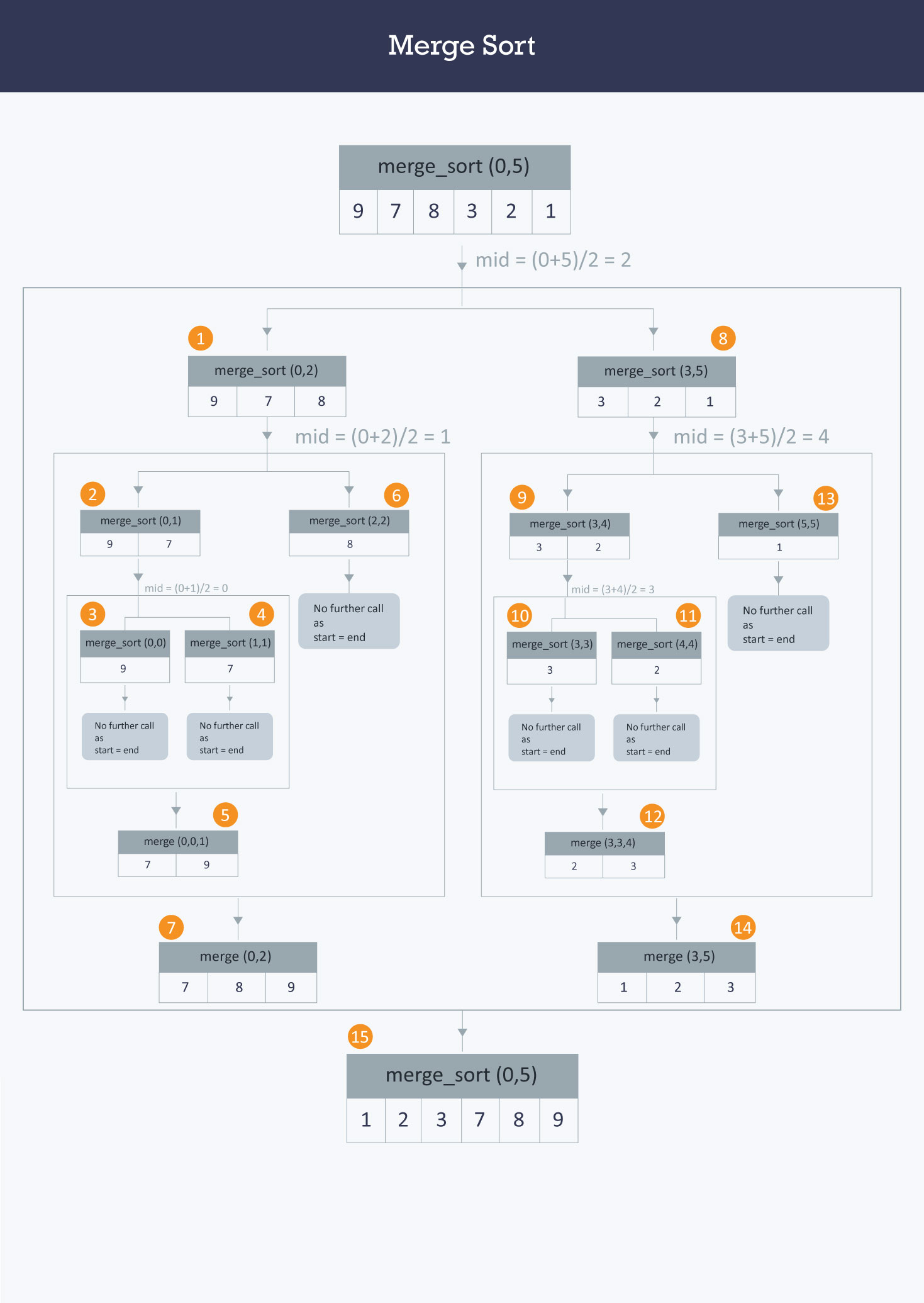A Sorting Algorithms Cheat Sheet
Today, we're diving into the fascinating world of sorting algorithms. A sorting algorithm is like a recipe for arranging a collection of elements (think Arrays, Hashes, and more) in a specific order.
Two Families of Sorting Algorithms
When it comes to sorting algorithms, they generally fall into one of two camps:
Comparison-Based Sorting Algorithms
- What They Do: These algorithms rely on comparing elements with each other to figure out their correct order.
- Complexity Bound: These are limited by a complexity of .
Non-Comparison-Based Sorting Algorithms
- What They Do: These smart algorithms use extra information and tactics, bypassing element-to-element comparisons to achieve sorting.
- Complexity Bound: These are not restricted to the complexity.
For further reading, check out this guide.
Criteria for Evaluating Sorting Algorithms
Before we dive into the specifics, let's establish the criteria we'll use to evaluate each sorting algorithm:
- Time Complexity: How long does the algorithm take to give you a sorted collection?
- Space Complexity: What's the memory footprint for executing the sort?
- Best Use Cases: This is about understanding the context—what type of data structure are you sorting, and what's the scenario?
Algorithms on the Examination Table
In this tutorial, we'll take a closer look at four different sorting algorithms and dissect their inner workings. We'll even throw in some simulations for good measure. Here's the list of algorithms up for discussion:
- Selection Sort
- Insertion Sort
- Merge Sort
- Bubble Sort
Selection Sort:
This algorithm is an in-place comparison-based algorithm that divided the list into two parts, the sorted part at the left end and the unsorted part at the right end. Initially, the sorted part is empty and the unsorted part is the entire list. The smallest element is selected from the unsorted array and swapped with the leftmost element, and that element becomes a part of the sorted array. This process continues moving unsorted array boundary by one element to the right.
The working of the selection sort algorithm is simulated in the below-mentioned figure:

Here's some pseudo-code to follow:
1procedure selection sort
2 arr : array of items
3 N : size of list
4
5 for i = 1 to N - 1
6 /* set current element as minimum*/
7 min = i
8 /* check the element to be minimum */
9 for j = i+1 to N
10 if arr[j] < arr[min] then
11 min = j;
12 end if
13 end for
14 /* swap the minimum element with the current element*/
15 if indexMin != i then
16 swap arr[min] and arr[i]
17 end if
18 end for
19
20end procedureTime Complexity: O(N2)
Space Complexity: O(1)
Best Suited Scenario:
The selection sort algorithm is best suited with Array data structures and the given collection is in completely unsorted order. This algorithm is not feasible for a very large number of data set and this is likely due to its time complexity.
xxxxxxxxxxconst selectionSort = function(array) { let temp; for (let i = 0; i < array.length; i++){ let minimum = i; for (let j = i + 1; j<array.length; j++) { if (array[j] < array[minimum]) minimum = j; } temp = array[i]; array[i] = array[minimum]; array[minimum] = temp; } return array;};console.log(selectionSort([1, 3, 6, 7, 4, 8, 9, 1, 4, 6, 7]));Insertion Sort:
This algorithm lies in the category of in-place comparison-based sorting algorithms. In this algorithm, a sub-collection is maintained which is always in order(sorted). For example, the lower part of an array is maintained to be ordered. An element that is to be added in this sorted collection has to find its correct place, and then it has to be inserted there. That’s why the algorithm is named ‘Insertion Sort’.
This sorting algorithm is basically a simple sorting algorithm that works similar to the way you sort the playing cards. The collection is virtually split into an ordered and an unordered part. Elements from the unordered portion are picked and placed at the correct index in the ordered part.
The working of the insertion sort algorithm is simulated in the below-mentioned figure:

Here's the pseudocode:
1procedure insertionSort( A : collection of items )
2 int holePosition
3 int valueToInsert
4
5 for i = 1 to length(A) inclusive do:
6 /* select value to be inserted */
7 valueToInsert = A[i]
8 holePosition = i
9 /*locate hole position for the element to be inserted */
10 while holePosition > 0 and A[holePosition-1] > valueToInsert do:
11 A[holePosition] = A[holePosition-1]
12 holePosition = holePosition -1
13 end while
14 /* insert the number at hole position */
15 A[holePosition] = valueToInsert
16 end for
17end procedureTime Complexity: O(N2)
Space Complexity: O(1)
Best Suited Scenario:
Insertion sort algorithm is best suited with Array and Linked list data structures and the given collection is in partially unsorted order. This algorithm is not feasible for a very large number of data set and this is likely due to its time complexity.
xxxxxxxxxxfunction insertionSort(arr) { for (let i = 0; i < arr.length; i++) { let temp = arr[i]; let j = i - 1; while (j >= 0 && arr[j] > temp) { arr[j + 1] = arr[j]; j = j - 1; } arr[j + 1] = temp; } return arr;}console.log(insertionSort([1, 3, 6, 7, 4, 8, 9, 1, 4, 6, 7]));Bubble Sort:
Bubble sort, also categorized as a “comparison-based” sorting algorithm, is a simple sorting algorithm that repeatedly goes through the collection, compares adjacent elements, and swaps them if they are not in sorted order. This is the simplest algorithm and inefficient at the same time. Yet, it is very important to learn about it as it represents the basic foundations of sorting. To perform sorting by this algorithm, the adjacent elements in the collection are compared and the positions are swapped if the first element is greater than the second one. In this way, the largest valued element "bubbles" to the top. Usually, after each loop, the elements furthest to the right are in sorted order. The process is continued until all the elements are in sorted order.
The working of bubble sort algorithm is simulated in below mentioned figure:

Here's the pseudocode:
1procedure bubbleSort( arr[]: collection of elements, N: size of collection)
2 for i = 0 to N - 1 do:
3 swapped = false
4 for j = 0 to N - i - 2 do:
5 if arr[j] > arr[j+1] then
6 swap(arr[j], arr[j+1])
7 swapped = true
8 end if
9 end for
10 if(not swapped) then
11 break
12 end if
13 end for
14endTime Complexity: O(N2)
Space Complexity: O(1)
Best Suited Scenario:
Bubble sort algorithm is best suited with most of the data structures and the given collection is in completely unsorted order. This algorithm is not feasible for very large number of data set and this is likely due to its time complexity.
xxxxxxxxxxconst bubbleSort = (arr) => { for (let i = 0; i < arr.length - 1; i++) { for (let j = 0; j < arr.length - 1 - i; j++) { if (arr[j] > arr[j+1]) { [arr[j], arr[j+1]] = [arr[j+1], arr[j]] }; }; }; return arr;}console.log(bubbleSort([5, 4, 3, 2, 1]));Merge Sort:
This is a Divide and Conquer algorithm. It divides the input collection into two portions, recursively calls itself for the two divided portions, and then merges the two sorted portions. This is one of the most efficient algorithms. Merge Sort Algorithm works in three parts:
- Divide: At first, it divides the given collection of elements into two equal halves and then recursively passes these halves to itself.
- Sorting: Unless, there is only one element left in each half, the division continues, after that, those two end elements (leaf nodes) are sorted.
- Merging: Finally, the sorted arrays from the top step are merged in order to form the sorted collection of elements
The working of the merge sort algorithm is simulated in below-mentioned figure:

Here's the pseudocode:
1procedure mergesort( var a as array )
2 if ( n == 1 ) return a
3 var l1 as array = a[0] ... a[n/2]
4 var l2 as array = a[n/2+1] ... a[n]
5 l1 = mergesort( l1 )
6 l2 = mergesort( l2 )
7 return merge( l1, l2 )
8end procedure
9
10procedure merge( var a as array, var b as array )
11 var c as array
12 while ( a and b have elements )
13 if ( a[0] > b[0] )
14 add b[0] to the end of c
15 remove b[0] from b
16 else
17 add a[0] to the end of c
18 remove a[0] from a
19 end if
20 end while
21
22 while ( a has elements )
23 add a[0] to the end of c
24 remove a[0] from a
25 end while
26
27
28
29 while ( b has elements )
30 add b[0] to the end of c
31 remove b[0] from b
32 end while
33
34 return c
35end procedureTime Complexity: O(NlogN)
Space Complexity: O(N)
Best Suited Scenario:
The merge sort algorithm is best suited with most of the data structures and the given collection is in completely unsorted order. This algorithm is feasible for a very large number of data set and this is likely due to its time complexity.
xxxxxxxxxxconsole.log(mergeSort([5, 4, 3, 2, 1]));function merge(leftArr, rightArr) { let resultArray = [], leftIndex = 0, rightIndex = 0; // Sort parts while (leftIndex < leftArr.length && rightIndex < rightArr.length) { if (leftArr[leftIndex] < rightArr[rightIndex]) { resultArray.push(leftArr[leftIndex]); leftIndex++; // move left array cursor } else { resultArray.push(rightArr[rightIndex]); rightIndex++; // move right array cursor } } // There will be one element remaining from either left or the right // Concat to account for it return resultArray .concat(leftArr.slice(leftIndex)) .concat(rightArr.slice(rightIndex));}function mergeSort(unsortedArr) { // Only one element base case if (unsortedArr.length <= 1) { return unsortedArr; } // Determine midpoint const midIdx = Math.floor(unsortedArr.length / 2);One Pager Cheat Sheet
- In this tutorial, we'll be discussing some important aspects of the
sortingalgorithms, namely Time Complexity, Space Complexity, and Best Suited Scenarios and Data Structures, as well as providing a simulation of Selection Sort, Insertion Sort, Merge Sort and Bubble Sort. - The
selection sortalgorithm is a comparison-based approach with atime complexityof O(N2), making it best suited for an array data structure with a small, completely unsorted collection. - Insertion sort is an in-place comparison-based sorting algorithm that works best with partially unsorted collections and has a time complexity of O(N2).
- Bubble sort is an inefficient
comparison-basedsorting algorithm that iterates through a collection and swaps adjacent elements, allowing the largest value to"bubble"up to the top, with Time Complexity O(N2) and Space Complexity O(1). - Merge Sort is a
Divide and Conqueralgorithm that divides an input collection into two portions, recursively calls itself to sort them, and then merges the two sorted portions, with Time Complexity O(NlogN) and Space Complexity O(N), best suited for large, unsorted collections of data.

